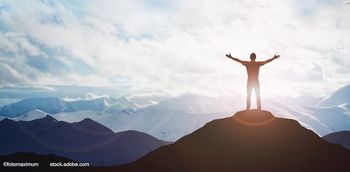
Pupil expansion device addresses surgical challenges of small pupils in patients
One of the greatest challenges facing the ophthalmologist is performing surgery on eyes with small pupils.
One of the greatest challenges facing the ophthalmologist is performing surgery on eyes with small pupils. Small pupils add complexity and difficulty to many ophthalmic procedures. Devices which effectively open these troublesome pupils are important and useful. Pupil expansion devices are essential tools for cataract surgery in cases of non-dilating pupils.
One such device (
The pupil expansion device is designed to safely expand the iris tissue in order to provide the surgeon a 7-mm field of view intraoperatively. It is a single-use iris expander made of soft-yet-resilient polyurethane.
The ring engages the iris completely, expanding it evenly over 360°, creating a uniformly round opening of 6.3 mm in diameter. On the outside of the ring there are four corners pointing away from the central opening, creating four channels that hold the iris in place. It is packaged with the inserter attached. I treat a lot of complex cataract cases, such as patients with small pupil and pseudoexfoliation syndrome, which require the use of a pupil expansion device.
It also is helpful as a precaution or in some femtosecond-laser-assisted cataract cases in a dilated pupil does not completely open again. It is preferable and carries less risk to implant the device at the beginning of the procedure. The challenge posed by small pupils can now be effectively managed using the device and complex cases can have more successful outcomes thanks to this simple novel device.
Newsletter
Don’t miss out—get Ophthalmology Times updates on the latest clinical advancements and expert interviews, straight to your inbox.
















































.png)


